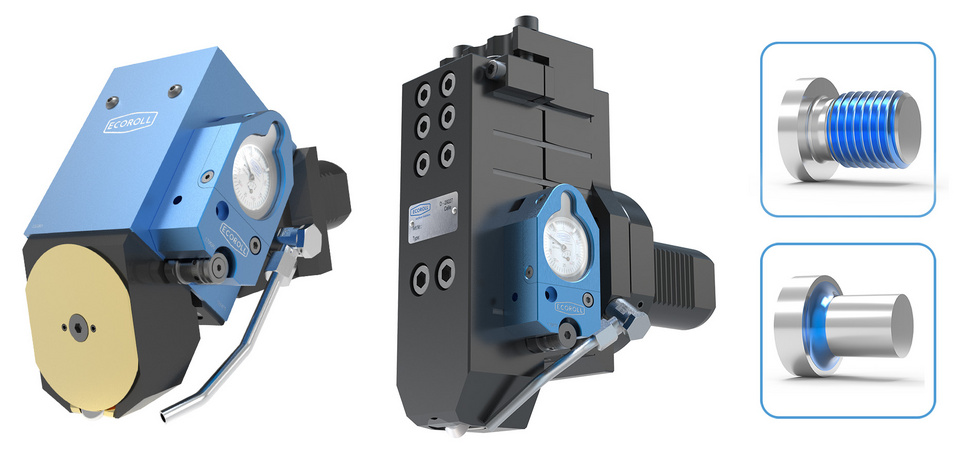EF: Deep rolling of fillets (internal and external)

Advantages
- For use on conventional or CNC lathe.
- Complete machining with one chucking.
- Can be used as right or left-handed tool.
- Both directions of rotation possible.
EF45
Characteristics:
- For machining of turned parts' fillets, like shafts, screws, tension bars, torsion bars.
- Deep rolling by plunging method.
- A floating roller.
- Rolling force monitoring with gauge or inductive position measuring system.

Basic construction:
- Type EF deep rolling tools consist of a tool body equipped with a shank, a spring assembly that allows the roller head to move with no play and very low friction.
- The standard version contains a dial indicator for indirect indication of the spring force. As an option, the tools can be equipped with ECOsense process monitoring for external display of the spring force.
- The roller head is attached to the flexible, spring-loaded section of the tool body. The flexible roller retainer moves in response to the radial or axial rolling forces on either side of the tool.
- The roller is guided by a cage and supported by a support body with large-scale needle bearings.
EF90
Characteristics:
- Deep rolling of thread root radii (external).
- Deep rolling in the machine's thread-cutting cycle.
- Axially floating roller provides compensation of minor positioning errors.
- Automatic angle adjustment of the roller for differing gradients.
- Machining of right or left-hand threads with no alterations required.

Basic construction:
- Type EF deep rolling tools consist of a tool body equipped with a shank, a spring assembly that allows the roller head to move with no play and very low friction.
- The standard version contains a dial indicator for indirect indication of the spring force. As an option, the tools can be equipped with ECOsense process monitoring for external display of the spring force.
- The roller head is attached to the flexible, spring-loaded section of the tool body. The flexible roller retainer moves in response to the radial or axial rolling forces on either side of the tool.
- The roller is suspended within the roller retainer with a slide bearing bolt. In addition, the roller mount swings such that the roller automatically adjusts to the thread pitch. A set screw limits the roller’s pivoting angle.